Files & Data Transfer
Easily Export all iPhone Data to Mac or PC

💡iMazing 3
This guide is not yet complete or updated for iMazing 3. An update will be available soon.
iMazing lets you transfer data to your iPhone or iPad and extract items such as photos, text messages, iMessages, and call history. While you typically export one data type at a time, the Export All Data tool exports everything at once in human-readable formats—especially valuable for repair shops that need to perform data extraction and recovery.
❗ Important
Exporting data is not the same as creating a backup. Exported data cannot be restored to your iOS device and is saved in human-readable, unencrypted formats. An iOS backup, on the other hand, can be easily restored, is typically encrypted, and isn't human-readable—though software like iMazing can view and extract files from it.
Here's how to export all the data from your iPhone or iPad:
- Launch iMazing on your computer
- Connect your device to your Mac or PC via USB
- Click on Devices in the left pane
- Click on Export All Data
- Select data types to export
- Click Export and choose a location for the data to be saved
- Going further
Before you begin
Always make sure you are running the latest iMazing version, to do so select Check for Updates from the iMazing menu, or just download the latest available version for your computer below.
Download and install iMazing on your Mac or PC computer.
Step-by-step instructions
1. Launch iMazing on your computer
If you haven’t already, download and install iMazing. For more details please refer to our guide available for PC and for Mac.
2. Connect your device to your Mac or PC via USB
iMazing will prompt you to connect the device to your computer on the first time you're using it. To do so use a USB cable, and unlock the device using your passcode, Face ID or Touch ID, and follow the instructions for pairing.
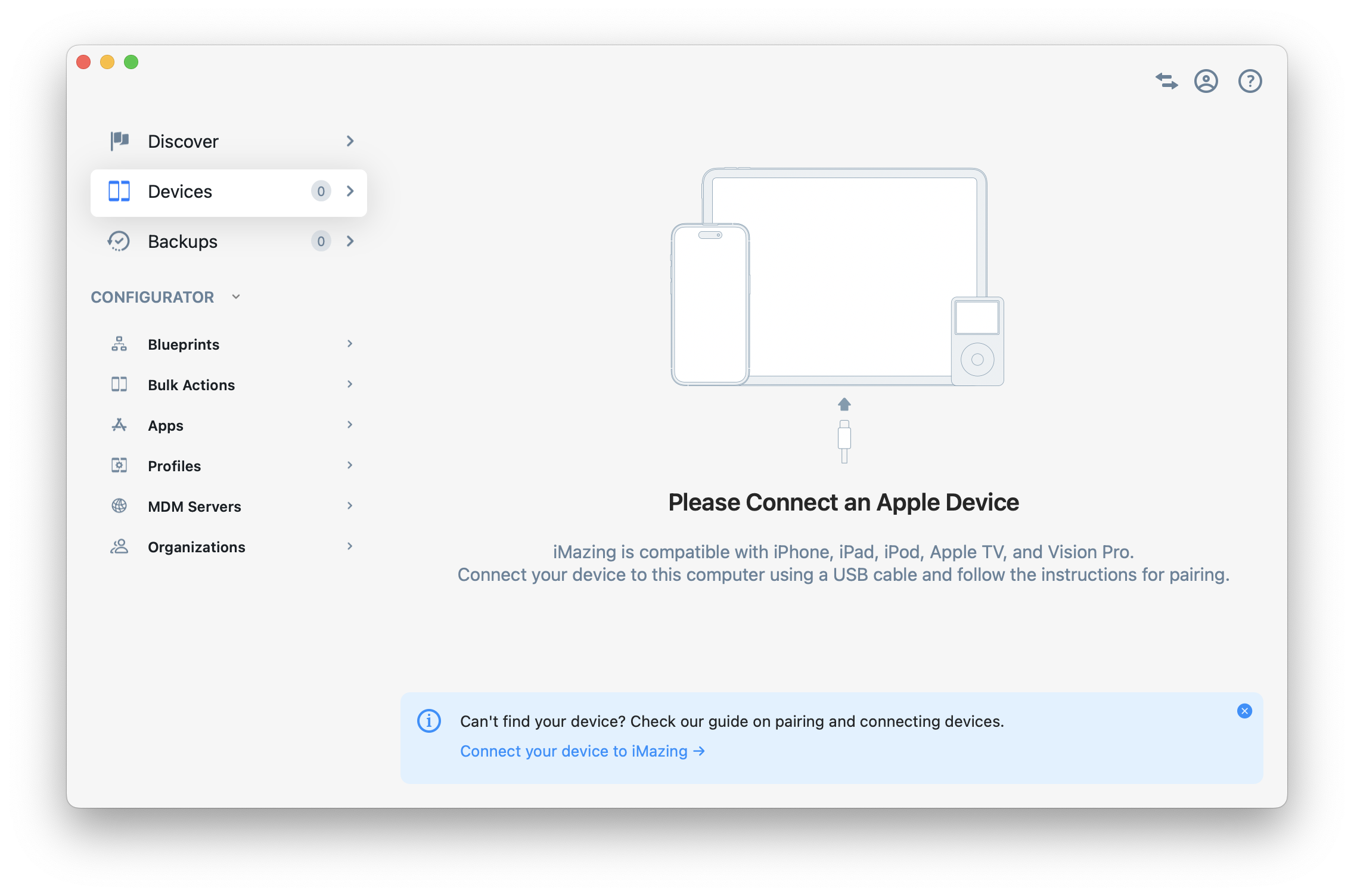
💡 Tip: For more details on connections and pairing refer to this guide.
3. Click on Devices in the left pane
From the devices view you will see all the devices previously connected and paired to your computer. Click to select a device.
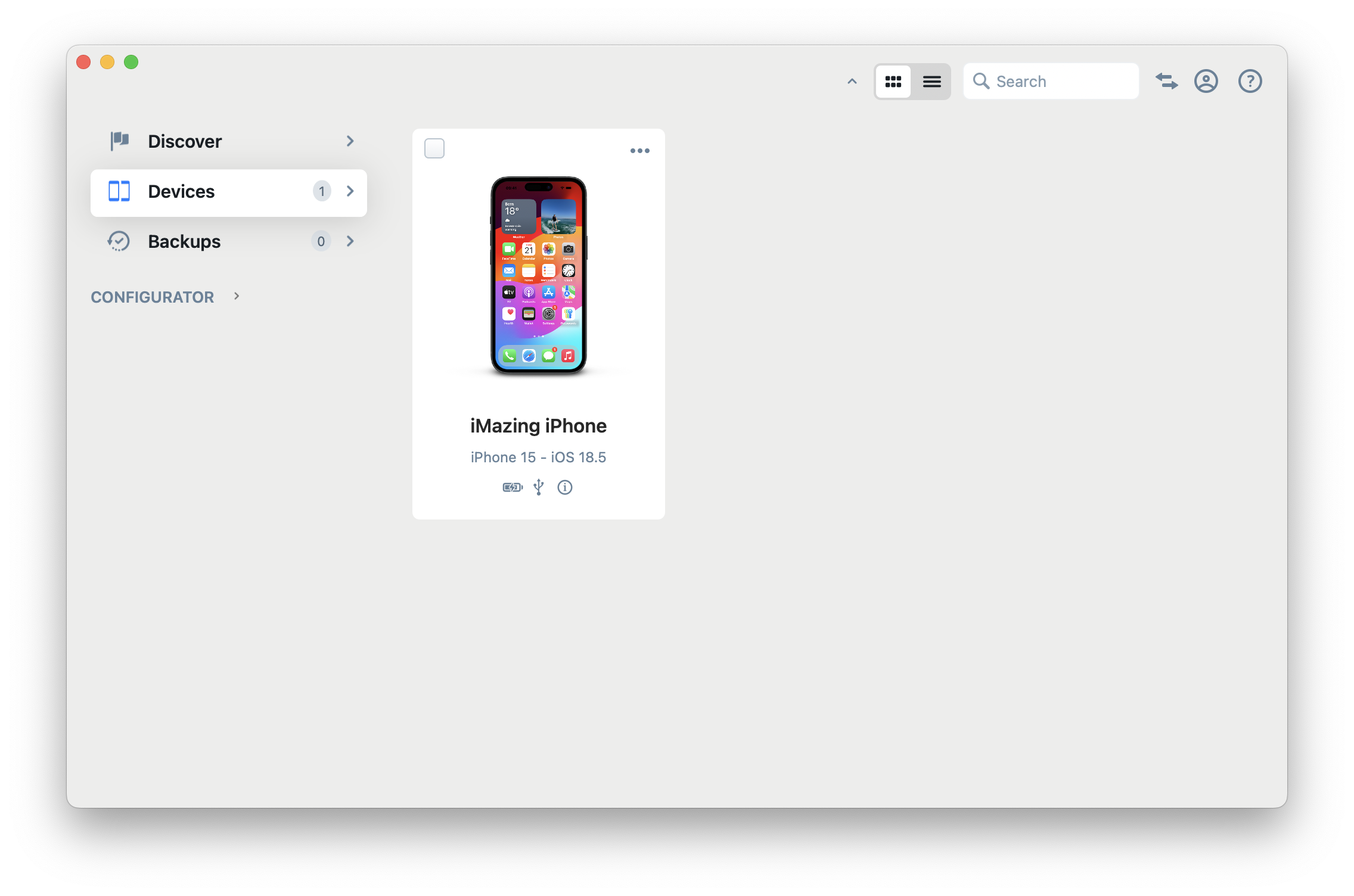
💡 Tip
Once your device is connected and paired, you can access any dataset or tool directly in iMazing:
4. Click on Export All Data
iMazing will display the Overview screen for the selected device. From here you can click on Export All Data in the Actions list in the right pane.
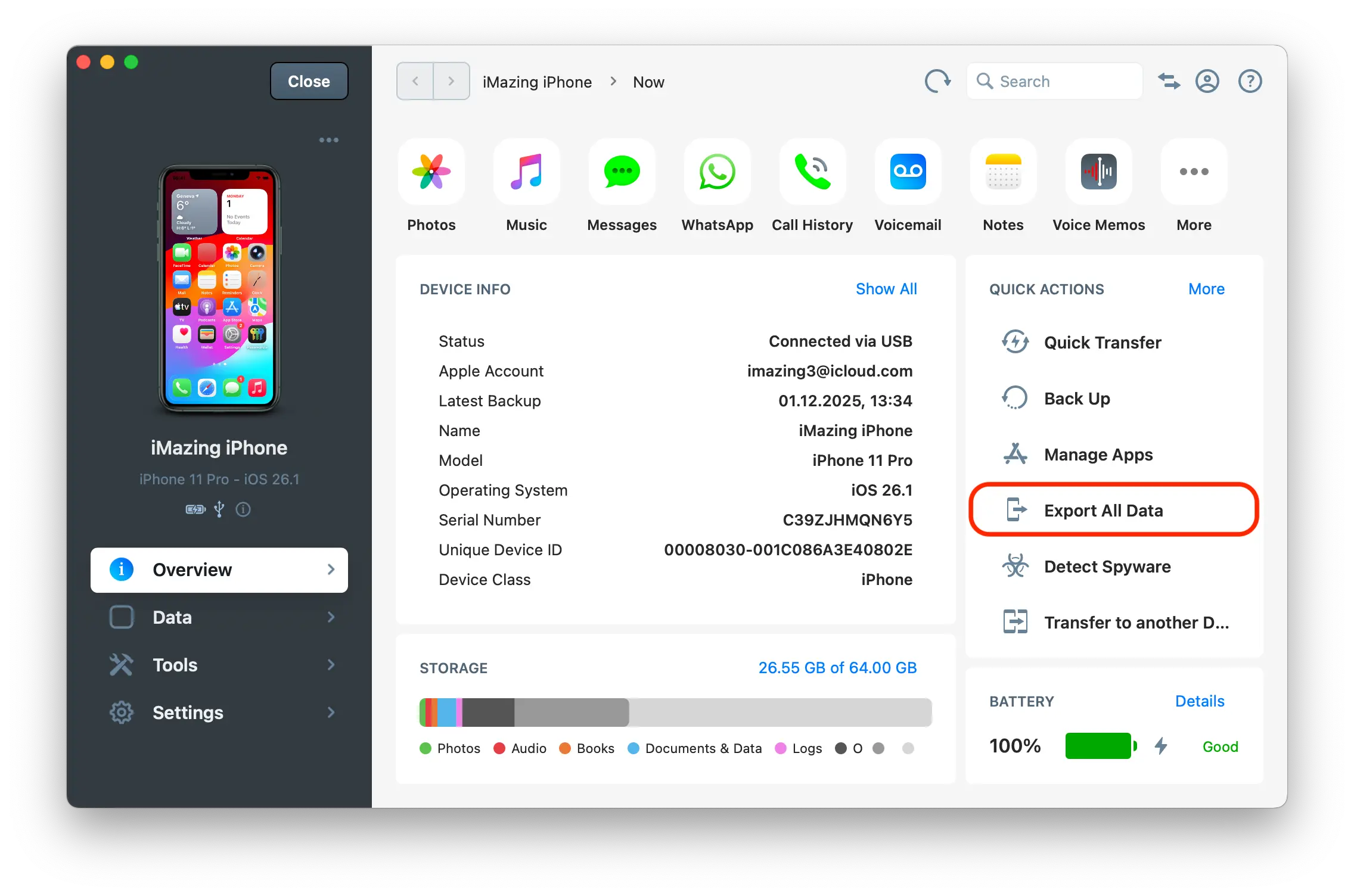
5. Select data types to export
From this screen, iMazing displays the types of data it can export from your iPhone or iPad. By default, all these data types are selected; you can uncheck any that you don't want to.
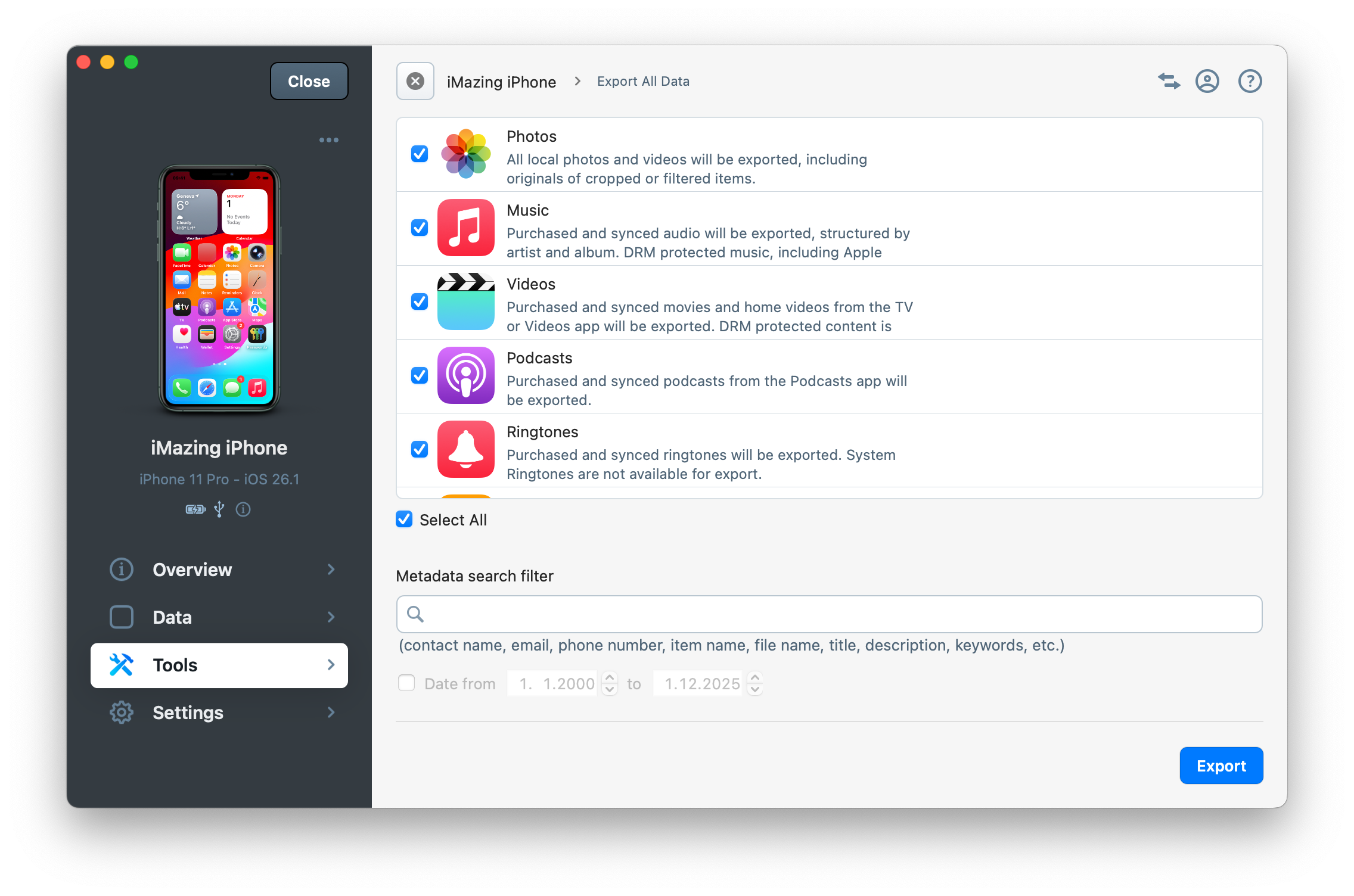
6. Click Export and choose a location for the data to be saved
Once you click Export, iMazing will ask where to save the data. Choose a folder you can access easily and check that you have enough free space on your computer. If you have a lot of data on your iPhone or iPad, export it to an external drive instead.
iMazing starts exporting your data. Depending on how much data is on your device, this can be quite fast or take a while, especially if you have many photos, videos, or music files.
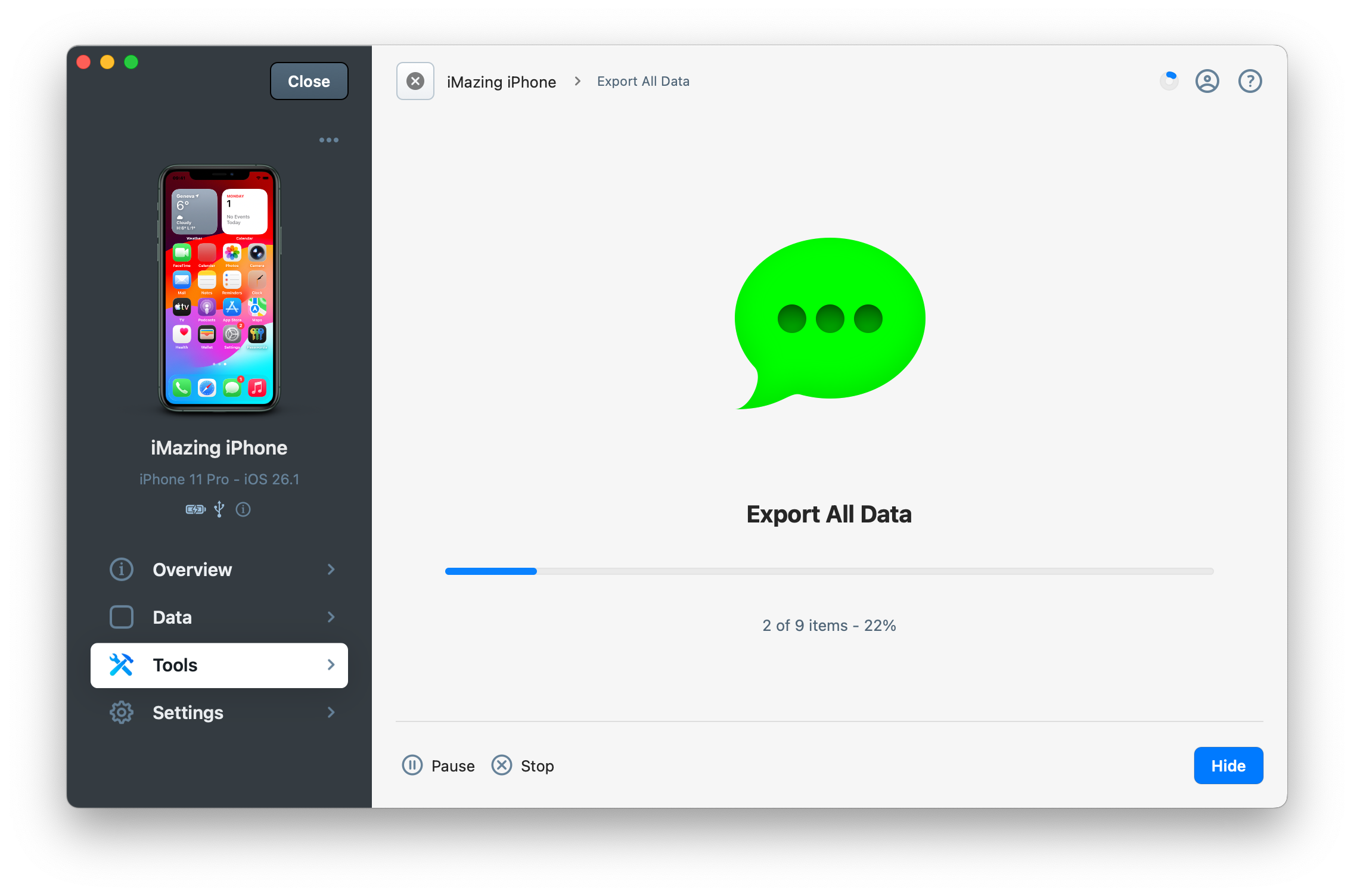
💡 Tip: Apple's technical restrictions prevent direct access to some data on your iOS or iPadOS device. To retrieve this data, iMazing must first create a backup of your device, then extract the necessary information from it. Learn more at Data Access Only vs. Full Backup in iMazing.
7. Going further
All possible exports in iMazing's Export All Data tool are also possible from the corresponding specialised view in iMazing. The tool is there to facilitate extraction, not to provide new types of exports.
Here are the data types that can be exported, and in which formats:
Photos
iMazing exports all the photos and videos in your camera roll, including originals for any photos that you may have cropped or applied filters to. This export includes recently deleted photos, but does not include photos stored in iCloud Photo Library that are not on your device. Photos are sorted in folders by date and location.
Music
This exports all music that is synced to your device, or that you purchased on the device, with the exception of Apple Music downloads, which are protected. Folders are sorted by artist and album.
Videos
Synced or purchased videos are exported. Videos that you've shot with your iPhone are in the camera roll, and are exported with your photos.
Ringtones
Synced and purchased ringtones are exported. Ringtones that are part of iOS are not exported.
Books
Ebooks and PDFs stored in the Books app are exported. iMazing does not export items that are stored in the cloud and not downloaded to your device.
Messages
SMSs, iMessages, and their attachments are exported in Excel, CSV and TXT formats, so you can view them in a spreadsheet (Excel/CSV) or a text editor (TXT).
Call History
You can export logs of calls you have made and received in Excel or CSV format, so you can view them in a spreadsheet.
Voicemail
Voicemail is exported in M4A files (Mac) or MP3 files (Windows). Voicemail is only exported if your carrier supports visual voicemail, and you have activated it.
Safari Data
iMazing exports your Safari bookmarks, Reading List, and browsing history, in Excel, CSV or HTML formats.
Contacts
Your contacts are exported in Excel, CSV or vCard formats.
Calendars
All calendar events from all calendars are exported in iCal, Excel and CSV formats.
Notes
Notes from the Apple Notes app, for all accounts you use, are exported in TXT files, including recently deleted notes.
Voice Memos
Voice memos that you have recorded with the Voice Memos app are exported in M4A format.
App Data
Data for all the apps on your device is exported. This data is what is found in the Library and Documents folders for each of these apps. Unlike the other data types, app data is generally not easy to read, but you can use this export to recover images and documents of some apps.
💡 Tip: It is also possible to export all data from a backup of the device. The process is strictly identical, with slightly less data types available: contents of the Music, Videos and Books apps are not included in iOS backups and therefore will not be exported.


